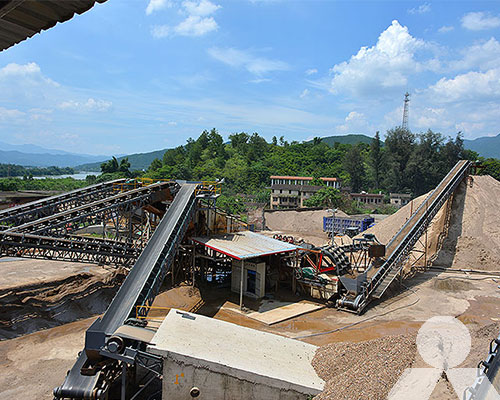News
Last Updated :2023-07-14
Introduction to the production process of granite crusher
The production process of a granite crusher involves several steps that transform raw granite stones into the final product. Here is an introduction to the typical production process of a granite crusher:

- Quarrying: The process begins with quarrying, where large deposits of granite stones are extracted from the earth’s crust. This is usually done through open-pit mining or by using heavy machinery to remove the granite blocks from the quarry site.
- Primary Crushing: The extracted granite stones are transported to a primary crusher, which is typically a jaw crusher. The primary crusher breaks the large rocks into smaller pieces, reducing them to a size suitable for further processing.
- Secondary Crushing: The smaller-sized granite stones from the primary crusher are then conveyed to a secondary crusher, such as a cone crusher or impact crusher. The secondary crusher further reduces the size of the granite stones into the desired size range.
- Screening: After the secondary crushing stage, the crushed granite stones are screened to separate them into different sizes. This is done using vibrating screens or other screening equipment. The purpose of screening is to ensure that the final product meets the specifications and to separate any oversize or undersize stones for further processing or disposal.
- Tertiary Crushing (optional): In some cases, a tertiary crushing stage may be included in the production process. This involves using a third crusher, such as a vertical shaft impactor (VSI) or a tertiary cone crusher, to further reduce the size of the granite stones to the desired specifications.
- Shaping and Finishing: After the crushing and screening stages, the granite stones may undergo additional processes to achieve the desired shape and finish. This can include processes such as grinding, polishing, or cutting the stones into specific dimensions or shapes. These processes are often performed using specialized machinery and equipment.
- Packaging and Transportation: Once the granite stones have been shaped and finished, they are typically packaged and prepared for transportation to their final destination. The packaging may involve wrapping or palletizing the finished products to protect them during transit. Depending on the scale of production, the transportation can be done using trucks, trains, or ships.
It’s important to note that the production process may vary depending on the specific requirements of the granite crusher and the manufacturer. Different equipment, techniques, and additional steps may be involved to meet specific quality standards and customer preferences.








